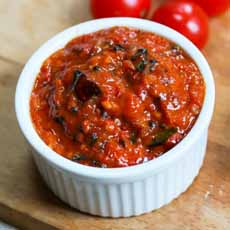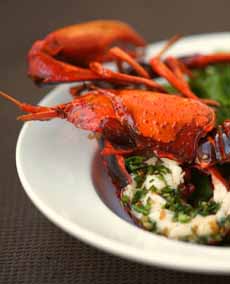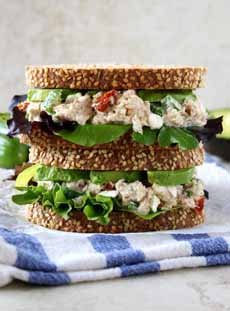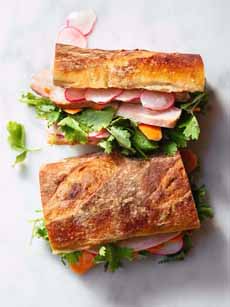|
This yummy holiday is celebrated annually on August 10th, a combination of graham crackers, toasted marshmallows, and chocolate bars, a favorite campfire treat of Girl Scouts since the early 20th century. But there are numerous s’mores recipes beyond the cookie sandwich.
The popularity of s’mores has had contemporary home cooks cooking up everything from s’mores ice cream, ice cream cakes, ice cream sandwiches, and pies; to bark, brownies, chocolate bars, cookies, and fudge; to s’mores cocktails.
The high point must be the s’mores kits sold by artisan chocolatiers and marshmallow makers, including homemade graham crackers (so good, that the big brands are like cardboard in comparison—here’s a recipe to bake your own).
The low point may be Kellogg’s Smorz and Post’s Honey Maid S’mores Cereal, which cons parents into allowing their kids to breakfast on chocolate, marshmallow and graham cracker bits.
The recipes from the classic to the creative are below, but first:
THE HISTORY OF S’MORES
We don’t know who invented S’mores, but the Girl Scouts certainly popularized them. The first published recipe is in their 1927 handbook.
S’mores around the campfire have been a happy tradition: a stick, a fire, two toasted marshmallows, a square of chocolate and two graham crackers get you a delicious chocolate marshmallow sandwich.
The combined flavors of toasted marshmallow, melty chocolate, and crunchy grahams are oh-so-much tastier than the individual ingredients (or, to quote Aristotle, the whole is greater than the sum of its parts).
It is very possible that a Girl Scout or troop leader, sitting around the campfire toasting marshmallows, pulled out graham crackers and chocolate, brought them along for snacking, and made the first sandwich.
The name of the sandwich cookie comes from its addictive quality: You have no choice but to ask for “some more.”
But you don’t need a campfire, or even all of the classic ingredients, to celebrate with S’mores, as you’ll see below (skillet s’mores are so easy, you won’t miss the fire).
Don’t have a heat source to melt marshmallows? Use Fluff or other marshmallow cream.
It may be too late to throw a s’mores party on National S’mores Day, but it will be equally welcome on Labor Day or any other day of the year.
Here’s the s’mores party we threw last year. It’s a feast of substitutions, the opportunity for everyone to create signature s’mores recipe (add some banana slices, use chocolate-covered grahams, peanut butter cup instead of chocolate bar, etc.).
Here’s a template for a s’mores party, from our 2013 party.
MORE S’MORES RECIPES
Here are some s’mores recipes with twists that we’ve published, just a smattering of the thousands of s’mores recipes out there.
Of course, the classic graham cracker sandwich with toasted marshmallows and a piece of chocolate is perfect as is.
S’mores Baked Alaska
Cinnamon S’mores and a cappuccino cocktail
Creative S’mores Recipes
Fancy S’mores (banana split, peach, peanut brittle etc.)
Grilled Banana S’mores
Gourmet Marshmallow S’mores
Ice Cream S’mores
Skillet S’mores (S’mores Fondue)
S’mores With Other Types Of Cookies
S’mores Ice Cream Cake, Ice Cream Pie and Cupcakes
S’mores In A Cup Or Mason Jar
S’mores Cookie Bars
S’mores Ice Cream Cake
S’mores On A Stick
S’mores On The Grill
S’mores Popcorn
Triscuit S’mores
|
|

[1] Ingredients for classic s’mores from Dandies, delicious vegan marshmallows (photo © Dandies).

[2] Smores without the mess from Chef Eric Levine (photo © Eric Levine).

[3] A pastry chef’s s’mores: homemade brownie with graham chunks and homemade marshmallows, browned with a torch (photo © Distilled NY. |
















